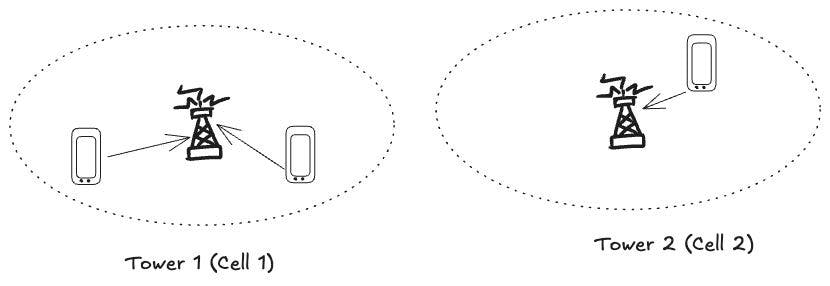We live in a fast-evolving digital age, making a high-speed internet connection just as essential as running water and electricity. But a lack of affordable internet options perpetuates what is known as the broadband divide — the gap that divides those who can or can’t digitally connect in meaningful ways. A lesser-known discussion point around the broadband divide goes beyond a lack of digital connectivity. Lack of fast internet — fiber specifically — negatively affects home values, hurting long-term wealth-building.
Economically, the broadband gap stifles growth in underserved areas by limiting access to online education, remote work, telemedicine and e-commerce. It hinders the development of a skilled workforce and prevents businesses from fully participating in the digital economy. Socially, it exacerbates existing inequalities, isolating communities from vital information, civic engagement and social connections, perpetuating a cycle of disadvantage.
“The economic and social consequences of being digitally invisible are real,” said Nicol Turner Lee, senior fellow and director of the Center for Technology Innovation at the Brookings Institution and author of the book Digitally Invisible.
Fiber-optic technology has substantially faster speeds than DSL and cable, the technologies it’s replacing and has greater reliability and all-weather access than satellite and fixed-wireless solutions. All of this leads it to be widely considered the gold standard of internet connections. It is crucial for data-heavy activities. Fiber-connected neighborhoods are experiencing significant appreciation in property values, while already marginalized communities are left further behind.
A study by the Fiber Broadband Association and The Brattle Group shows homes with a fiber connection have an average 14% increase in home value compared with homes without fiber. This figure stuck out to me as someone who covers the housing market for a living. In the personal finance community, homeownership is a widely accepted strategy for wealth-building and financial security. When your home’s value increases, whether due to general price appreciation or through upgrades like a fiber connection, your home equity growth accelerates, in turn, increasing your overall net worth. The higher your property’s value, the bigger the profit when selling it.
The broadband divide shouldn’t hinder wealth-building through homeownership, but it does. The Federal Communications Commission shows only 46% of US households have access to fiber broadband, with low-income and rural communities disproportionately affected by the lack of internet service provider options.
Why fiber internet is best
When it comes to speed, fiber internet is a game-changer. It uses light to send data through glass, which is much faster than dated coaxial copper wires or latency-ridden satellite technology. It has the bandwidth to handle our country’s increasing demand for higher speeds and more data. You have a few options for high-speed broadband, including wireless and (certain) satellite connections, fixed-wireless access, cable and fiber-optic technology.
“Fiber is also more reliable than a cable operator, and a lot of that has to do with the fiber technology versus the technology that cable operators use,” said Dan Gillan, chief revenue officer at Dobson Fiber. Cable internet signals can be affected by electromagnetic interference, weather conditions and signal loss over long distances. Fiber-optic cables, however, are immune to electromagnetic interference and, compared to cable, are less prone to weather-related disruptions and degradation over long distances.
“With fiber, once it’s in the ground, you’re not going to have to dig it back up 50 or even 100 years from now,” said Brian Whitacre, a professor at Oklahoma State University who specializes in rural economic development. “It’s kind of future-proof from that standpoint,” he said, meaning if you invest in a property with fiber, you’re investing in a technology that will stand the test of time.
Fiber simply offers better speed, bandwidth and longevity for your money. Here’s a comparison between the different internet connection types and the speed-to-price ratio each offers.
How fiber internet is impacting home values
Home prices are determined by a range of factors, including location, age, proximity to quality school districts, market conditions and recent upgrades or renovations.
“Having a fiber connection could be likened to having a pool or another amenity that improves your quality of life,” Turner Lee said.
“As the internet becomes much more transformative and embedded in probably everything that we do, having access to technology is definitely an incentive for any person who wants to not only live, but thrive in this new digital ecosystem,” Turner Lee said.
Homes with fiber internet tend to cost more not just because it’s the best broadband option but because there’s greater buyer demand in well-connected metro areas. A Brookings Institution study shows markets with access to fiber internet also tend to have higher income levels, greater diversity in job opportunities, better educational outcomes, larger populations and increased potential for future business and infrastructure development. All of these are factors that positively influence property values.
“The extent to which economic opportunities are available for people, of course, makes a difference in whether or not that neighborhood is going to be enticing for people,” Turner Lee said.
What a home fiber connection means for wealth accumulation
Owning a home is an asset that increases in worth over time. Therefore, its value directly affects your wealth accumulation. As your home’s value rises, your net worth increases. Any percentage increase in home value translates to a significant gain on your initial investment.
If you purchase a home equipped with fiber, or an ISP chooses to install it after you buy, you can expect bigger home equity returns. Factoring in the average value-add of fiber — around 14%, according to the Benton Group — a home with fiber would be worth roughly $40,000 more than one without after just 10 years (using an annual appreciation rate of 3%).
The broadband divide is a fiber divide: Who gets left behind?
You’ll find fiber in most cities and suburbs these days, but it’s a different story if you’re in a low-income or rural spot. The problem? Fiber is expensive to install. Internet companies can make it work in cities because they get lots of customers in a small area. But in rural areas, where houses are far apart, they just don’t see the profit, said Chao Jun Liu, senior legislative associate at the Electronic Frontier Foundation.
Worse still, due to the lack of ISP options, experts say low-income and rural communities end up paying more for broadband than those in high-income areas. “There’s a huge competition component here,” Liu said. “In those rural areas, in those low-income communities, there’s no one to compete against, so the providers can get away with it.”
But it’s not just about availability. The higher hurdle is getting people to actually adopt and use broadband, Whitacre said. “A lot of people have fiber available to them, but they can’t afford to pay, you know, $50, $80, $100 a month for a regular connection.”
Despite its name, the broadband marketplace is the opposite of “broad” or a “marketplace.” Even urban or metro areas have just a handful of internet options. Of the 46% of households eligible for fiber internet, only a tiny fraction — less than 3% — have access to more than one provider.
ISPs have little incentive to offer competitive pricing or improve service quality if they operate like a virtual monopoly. The broadband — or fiber — divide isn’t just an economic issue. It exacerbates inequalities and puts a double burden on marginalized communities: paying more for significantly less capable internet service.
Unequal internet access, unequal opportunity
The fact that properties with a fiber connection are considered more valuable reflects the growing importance of seamless internet access. Even though fiber can be more expensive to install, it’s faster, more reliable and can stand the test of time. But fiber internet is more than just a tool for staying connected. It’s a catalyst for economic growth and upward mobility.
Fiber access can be traced along the geographic lines dividing the US, which are, more often than not, drawn along the fault lines of economic disparity. Broadly speaking, wealthier urban and suburban areas get access to fiber first.
Although fiber access is improving, homes in rural areas and low-income city areas still lack it, so they don’t have its full benefits, said Gary Bolton, president and CEO of the Fiber Broadband Association.
This digital disparity limits their access to essential services and economic opportunities while further exacerbating existing inequalities by denying them the long-term value added by fiber connectivity.
“We need to continue to close the broadband divide so that we’re not disservicing people without access or foreclosing on opportunities that they could actually benefit from,” said Turner Lee.
While systemic change at the government level is crucial, there are ways you can help bridge the gap. One is through informed voting. Support representatives who prioritize broadband expansion, especially in underserved areas, and regulations that aim to make internet access more affordable.
But getting broadband isn’t just about infrastructure — plenty of people can use it but don’t. Another option is to volunteer your time to teach digital skills in your community. Empowering more people to utilize the internet can drive up adoption rates and ensure access translates to real opportunity.
Advice for homebuyers
Internet connectivity is a key factor in a home’s value and ability to keep up with the demands of modern life. It’s a consideration that buyers should weigh alongside other factors like location, size or condition.
Here are some tips to keep in mind while you’re house hunting:
- Research available ISPs in the area. If you need a certain type or quality of internet connection, start by confirming its availability in your target areas. Online tools are a good start, but call local ISPs to verify service at specific addresses. Check speed options and ask about any data caps or contracts.
- Check the home’s network setup. Ideally, you want Ethernet ports already in the rooms where you’ll use the internet most. If they’re not there, find out how much it will cost to install them. Also, consider Wi-Fi coverage; a central router or existing wiring is a plus.
- Think long-term about connectivity. Consider how your needs might change and how your connection type could affect resale value. Homes with good internet, especially fiber, are valued higher than those without.
While real estate can be a valuable asset, it’s essential to recognize that wealth can be built through other avenues. Consistently contributing to a retirement account, like a Roth IRA or 401(k)s is one option, investing in the stock market through diversified funds and saving your money in high-yield accounts are all effective strategies to accumulate wealth, especially when done in tandem.









